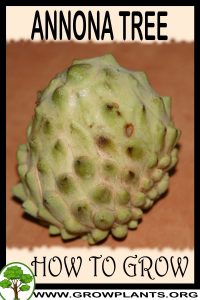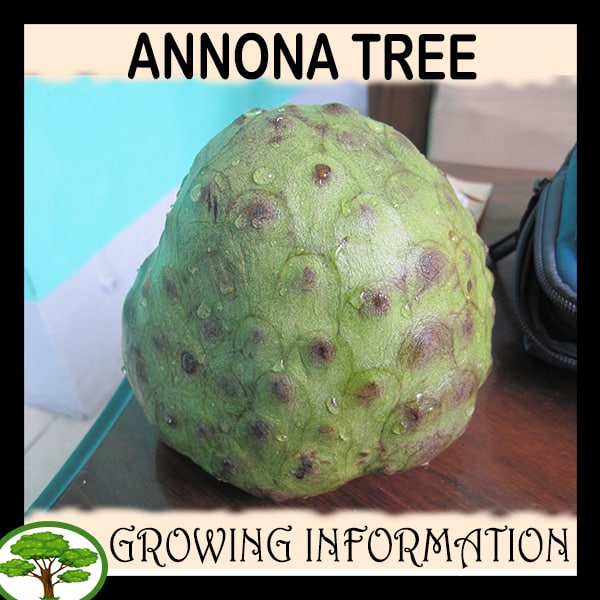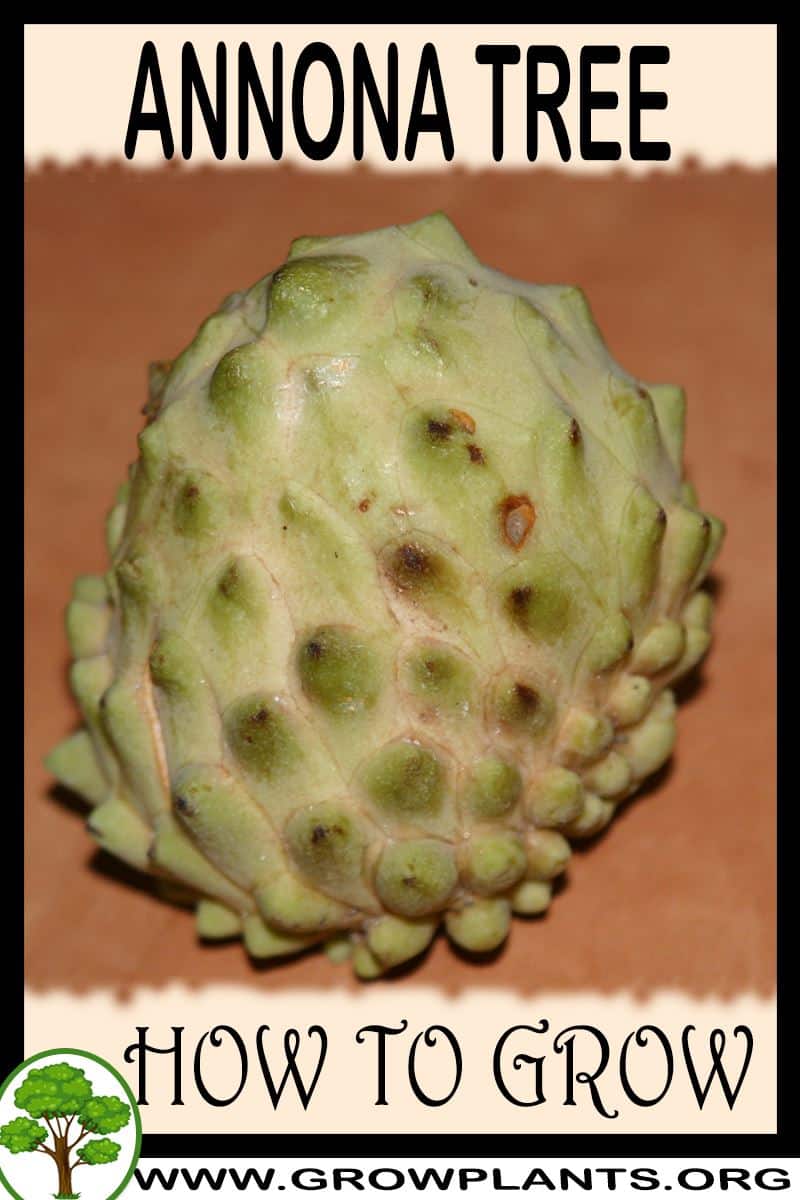
Annona tree grow and care – tree of the family Annona treeceae and also known as Anona plant or Sop, Annona tree evergreen perennial but in a cold weather become deciduous plant, can grow in tropics mediterranean or subtropical climate and growing in hardiness zone 10+.
Flower small green-yellowish, separate times on the same tree female and male flower, the flowers are protogyny at first female and after become a male flower.
Annona tree edible fruit
Fruit rind sometimes have skin dandruff sticking out and sometimes part of the skin sometimes it’s skin with bumps or little fleshy spines the inner part is white yellowish
Annona tree for sale – Seeds or Plants to Buy
How to grow Annona tree growing and care:
Two trees for increase the chance of pollination, rich soil, mulch
How to care:
Two trees for increase the chance of pollination grow the trees, prune once a year, fertilize 4 time a year (when the tree is young more nitrogen), cover the soil in mulch, add humus and organic matter.
What is the best way to start growing?
Plant / Cutting conditions / Air layering / Seeds (explanation bellow)
Is it necessary to graft or use vegetative reproduction?
Yes, it’s not hard to start by seeds but better grafted tree can be ensure the quality of the fruits like: taste, amount of seeds, size of the fruits, less years to bear fruits, and longer season, also possible to graft to different cultivars on the same tree also another option to graft two different species of Annona trees
Difficulties/Problems with growing:
Low amount of fruit caused by the difference blooming hours between flower for male and female trees
Planting season:
Spring in hardiness zone 10a, spring to summer in hardiness zone 10b, spring to autumn in hardiness zone 11a, all year in hardiness zone 11b+
How to plant:
Dig hole bigger 50% more than the roots ball, add to the hole, organic matter, dead leaves and hummus put back some soil and mix it, after this put the tree cover lightly but strong enough that won’t fall put support for the tree if needed, if the tree is not stable consider to prune, water it twice in the first day and every day for two weeks.
Pests and diseases:
Aphids, borer, scales, leafhopper, mealy bugs, mites, whiteflies
Pruning season:
Winter and also possible to prune after the fruits
How to prune:
Cut the outer branch, make the branches grow into each other in high density, when grow to cultivars or species better to let them grow into each other it’s increase the amount of fruits, when takes leaves by hand for the base, might grow stem in this location so it’s something to consider.
Size of the plant?
2-10 m, 6-30 feet
Growth speed in optimal condition:
Medium growing to fast growing and in the tropical grow or with enough fertilizer will grow faster
Water requirement:
Average amount of water to big amount of water
Light conditions in optimal condition for growing:
Full Sun (better in full sun the tree will yield more fruits) / Half Shade
Is it possible to grow indoor as houseplant?
No
Growing is also possible in a planter, flowerpot or containers:
Need to keep the tree small to grow it as shrub or as bonsai, consider to graft two cultivars on the same tree, the container need to be 20% bigger than the root ball until the plant arrive to the right container, wouldn’t recommend to start from big container on small tree in this method it’s care for the viability of the soil, grow with the tree will be the best method, every few years to switch the soil with big container there is no need to switch all just switch part and cut some of the roots ball (can switch from the side and the top, fertilizer four time a year, making enough holes in the container for good drainage also choosing soil for container important an option it’s to use peat soil, perlite and organic matter, need to add hummus few time a year, water it regularly and when put bottom for the pot be aware not to let the water sit there more than one day and do not over water it’s destroy the soil and the roots.
Blooming information
Bloom season:
Spring / Summer
General information about the flower:
Small green-yellowish flower, separate times on the same tree female and male flower, the flowers are protogyny at first female and after becomes a male flower, and the female stage is in the day time afternoon mostly the male stage in the early morning
Thinning the bloom:
First two years
Pollination is done by:
Bees, hand-pollinate
How to pollinate:
Pollination performed by collecting the male pollen by cotton swabs and pollinating the female flowers. Gathering flowers in a male form, (make sure that the flowers from weak area or not next to female flower). Keep flowers in a dark place, high humidity, preferably in a cool and ventilated place. If the flower pollen has been took out, the male flower not useful.
Edible Fruit
Fruit harvest season:
Summer / Autumn
Fruits pests or diseases:
Birds, aphids
What can be done with big quantities of Annona tree fruits?
Eaten raw, juice, cakes, jam
Work requirements on the fruit:
Increase Irrigation, possible to put net under the tree to collect the fruits
How long does it take to bear fruit?
2-4 years
Ripening of fruit
Recommend collecting the fruit little bit before ready
How to grow Annona tree from seed
Sowing requirement:
Soak the seeds for 12-24 hours, better in peat soil with vermiculite possible in other soils, take care that the soil will be well ventilated (better result), sunny location, high humidity, temperature of 24-28C (75-83F)
Saving seeds until sowing:
Dry and dark location, keep it room temperature
Sowing season:
Spring will be better for the tree but possible in summer, and in hardiness zone 12+ possible all year
How to plant:
Plant in soil that will keep the water and don’t let it dry, full sun
Planting spacing:
Better in different pots – because need to graft it after and some won’t establish, better to choose the best to transplant to the real location
Depth of Sowing:
3-5cm, (~1-2inches)
Conditions for seeds germinate:
Moist soil, sunny location, water regularly and don’t let it dry
Watering requires for Seeds:
Average amount of water
Germination time:
2-4 weeks
Condition of seedling:
Sunny location, humidity and moist soil
Varieties
Cherimoya – fruit with dandruff skin the dandruff part of the skin and the color of the skin green-yellow and the inner color is white-yellow
Sugar apple – fruit with is dandruff skin the dandruff sticking out the color of the skin green-yellow and the inner color is white-yellow
Atemoya – fruit outer is dandruff skin the dandruff sticking out the color of the skin green-yellow and the inner color is white-yellow
Mountain soursop – fruit shape Round-oval, the weight 0.7-1.2 Kg and the size 7-15 cm. The skin is like a dandruff skin, the dandruff is part of the skin every cube connection there is little fleshy spines and the color of the skin dark green and the inner color is white-yellow
Guanabana – leaves edible the shape oval and green light to dark the Flowers are small green light to dark, The fruit can be 2-4 kg, oval shape an dark to light green-yellowish skin with bumps or little fleshy spines, the inner fruit is white with dark seeds
Custard apple – fruit skin of the fruit is dandruff skin the dandruff sometimes part of the skin and sometimes sticking out the color of the skin brown and sometimes red and the inner color is brown or red
Scientific name:
Annona
Categories
| Blooming Seasons |
|
|---|---|
| Edible Parts |
|
| Culinary uses |
|
| Flower colors |
|
| Climate |
|
| Harvest Season |
|
| Plant growing speed |
|
| Plant life-form |
|
| Plant Uses |
|
| Planting Season |
|
| Plants sun exposure |
|
| Watering plants |
|
| Hardiness zone |
|



